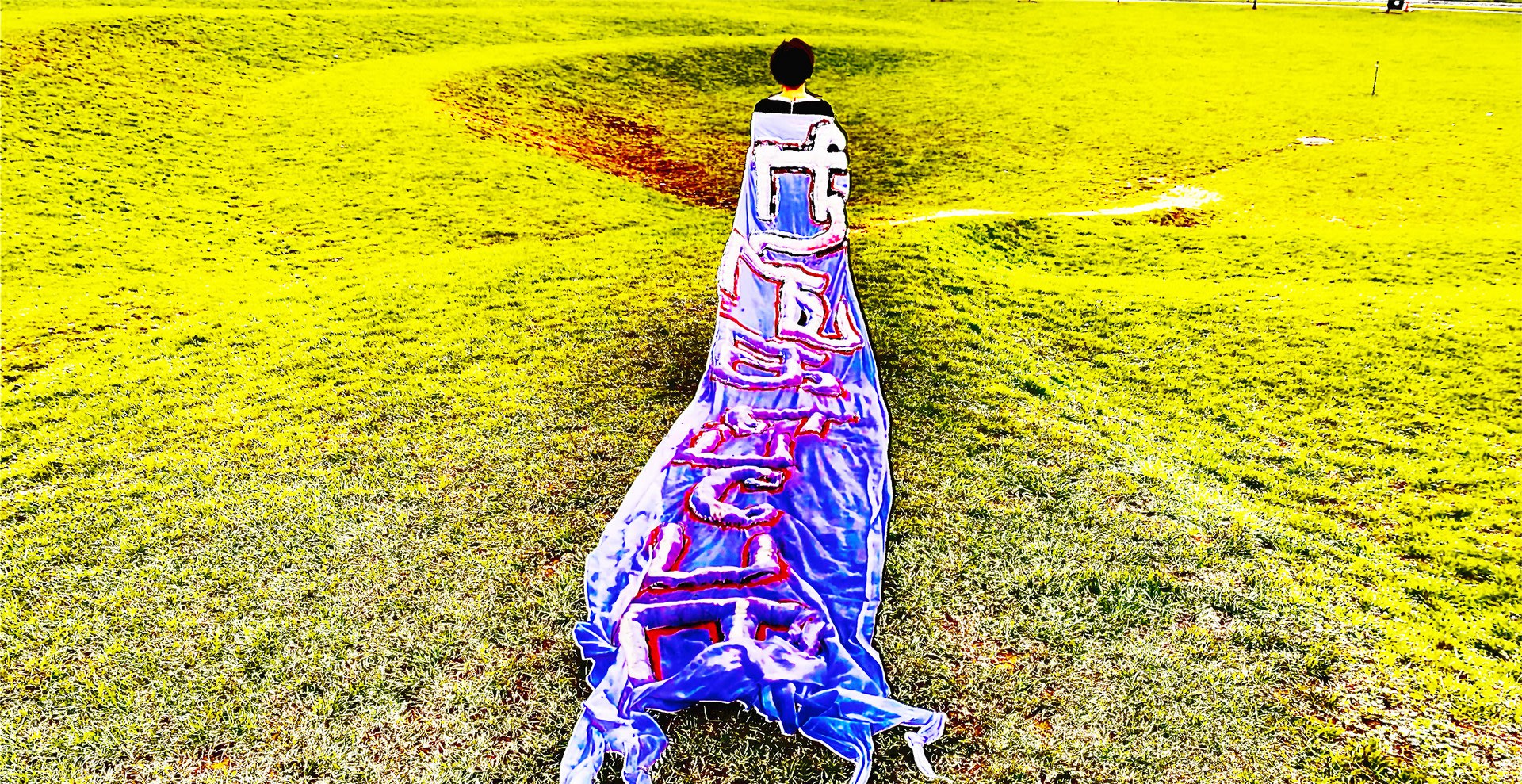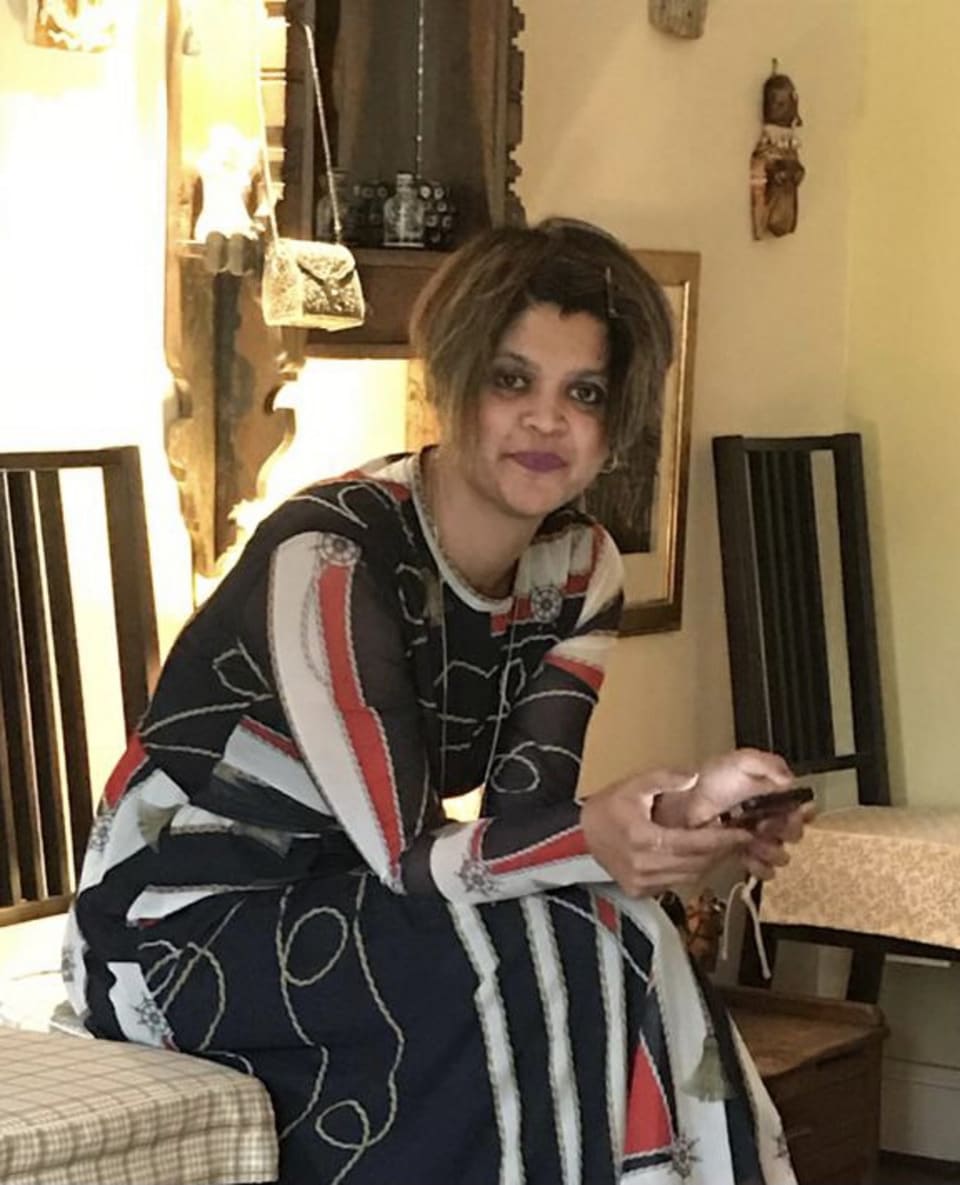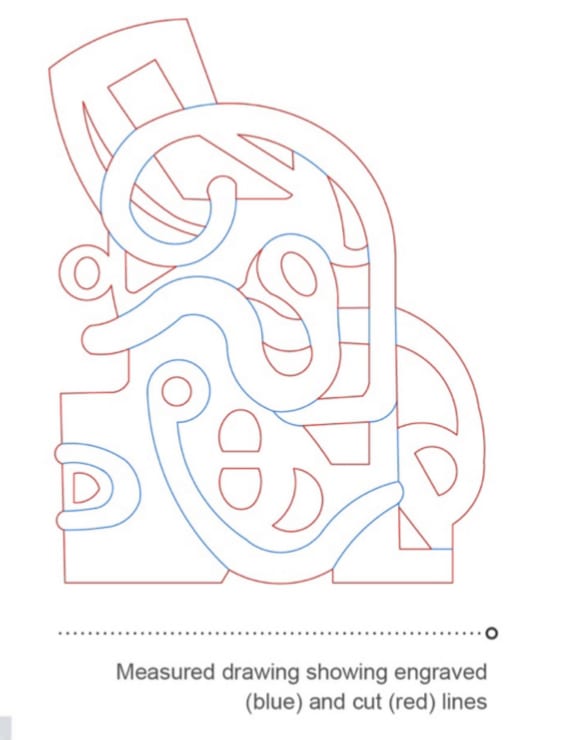The weight of the letter the mnemonic activator of spoken stories. As the hills and bending grasses spoke to our ancestors, so do written words speak to us ..hearing printed shapes as a magical gateway revealing new secrets of the cosmos.
The trajectory of my project this year started with my learning to read and write my mother tongue Tamil, online, from May of 2020. The intention was to not only to reconnect with my heritage but also to find a foothold within the diaspora in the UK. I clocked the feeling of longing and nostalgia I felt while seeing the script come alive with every week and used it to push towards understanding the idea of identity, sovereignty, nationhood and diaspora. As an Indian born British citizen, the critical edge of the work was also to question boundaries, the borderlands, exile, otherness, strangeness and foreignness amongst diasporic communities while working on my own sense of misalignment. I have made many iterations with the concept, working with fabric manipulation, installations with objects, performance and film.
As part of my practise, I was able to engage with the local Tamil diaspora (the diaspora includes communities both from South India and Sri Lanka). I have collaborated with classical dancers and together we have choreographed dance routines as a way of embodying tradition, movement and emotion. I am also part of the Tamil Museum project in London.
During the lockdown I have had the chance to re-evaluate my working methods. The limitations faced working in a home studio has allowed me to think differently, but still be ambitious with materials, scale and in learning new skills.
I live and work in London, UK.
Education
MA in Sculpture RCA 2021
BA in Painting (Hon) Wimbledon College of Art UAL, London 2019
Diploma in Fine Art Putney School of Art and Design 2013
Group Shows
Show Royal College of Art London (2020) Vasteras International Art Fair Sweden (2020) ‘For Money or Love’ Group show Copeland Gallery Peckham (2019) ‘Fully awake III’ Wimbledon College of Art (2019) The Toast Rack, Artisan Bakery & Cafe | Wandsworth | London (2018) ‘Netflix and chill’ Group show at the Flying Dutchman Camberwell (2018) ‘Neulinge’ The Crypt Gallery St Pancras, London (2018) Khojaly Competition finalists’ exhibition at the Parliament House London (2017) Made in Morley, Print Exhibition Morley College London (2016) Sculpture Exhibition Kings College School Wimbledon, London (2015) Open Studios Wimbledon Art Studios May and Nov (2015) Studio 106 Group Exhibition 'Seven' Fulham Broadway, London (2013) Fulham Community Centre Exhibit| Fulham, London (2013)
Curatorial Projects
Figure it Out – Group Show by The Neulinge Collective at the Lewisham Arthouse 2021, Podcast founder and Host called ARTiculate – since May 2020, Neulinge - Group show at the Crypt Gallery St Pancras 2018 Went to work, Came back – Co-curator of archival show at the South London Gallery 2018
Conferences and Lectures
The Architecture of Loss – RCA MRes and Architecture Foundation - Presenter 2020, The World that was – From 1500 to 1800 AD – Understanding the relationship between Europe and Asia on the cusp on colonisation 2020
Awards
RCA Gilbert Bayes Trust Award 2021
Shortlisted for the Khojaly Prize in 2017


![[untitled]](https://res.cloudinary.com/rca2020/image/upload/f_auto,h_1815,w_1147,c_fill,g_auto,q_auto/v1/rca2021/60ae973d9c31b077aa58f382-554857?_a=AXAH4S10)
![[untitled]](https://res.cloudinary.com/rca2020/image/upload/f_auto,h_1440,w_1920,c_fill,g_auto,q_auto/v1/rca2021/60ae973d9c31b077aa58f382-898795?_a=AXAH4S10)
![[untitled]](https://res.cloudinary.com/rca2020/image/upload/f_auto,h_1440,w_1920,c_fill,g_auto,q_auto/v1/rca2021/60ae973d9c31b077aa58f382-964456?_a=AXAH4S10)






![[untitled]](https://res.cloudinary.com/rca2020/image/upload/f_auto,h_2501,w_1920,c_fill,g_auto,q_auto/v1/rca2021/60aec8b39c31b077aa59041f-239310?_a=AXAH4S10)
![[untitled]](https://res.cloudinary.com/rca2020/image/upload/f_auto,h_1440,w_1920,c_fill,g_auto,q_auto/v1/rca2021/60aec8b39c31b077aa59041f-273071?_a=AXAH4S10)
![[untitled]](https://res.cloudinary.com/rca2020/image/upload/f_auto,h_1440,w_1920,c_fill,g_auto,q_auto/v1/rca2021/60aec8b39c31b077aa59041f-306605?_a=AXAH4S10)
![[untitled]](https://res.cloudinary.com/rca2020/image/upload/f_auto,h_1440,w_1920,c_fill,g_auto,q_auto/v1/rca2021/60aed7ae9c31b077aa591219-459287?_a=AXAH4S10)
![[untitled]](https://res.cloudinary.com/rca2020/image/upload/f_auto,h_1440,w_1920,c_fill,g_auto,q_auto/v1/rca2021/60aed7ae9c31b077aa591219-528341?_a=AXAH4S10)
![[untitled]](https://res.cloudinary.com/rca2020/image/upload/f_auto,h_988,w_750,c_fill,g_auto,q_auto/v1/rca2021/60aed7ae9c31b077aa591219-769165?_a=AXAH4S10)
![[untitled]](https://res.cloudinary.com/rca2020/image/upload/f_auto,h_2560,w_1920,c_fill,g_auto,q_auto/v1/rca2021/60aed7ae9c31b077aa591219-590240?_a=AXAH4S10)
![[untitled]](https://res.cloudinary.com/rca2020/image/upload/f_auto,h_2560,w_1920,c_fill,g_auto,q_auto/v1/rca2021/60aee0549c31b077aa592e4a-565530?_a=AXAH4S10)
![[untitled]](https://res.cloudinary.com/rca2020/image/upload/f_auto,h_2560,w_1920,c_fill,g_auto,q_auto/v1/rca2021/60aee0549c31b077aa592e4a-16529?_a=AXAH4S10)
![[untitled]](https://res.cloudinary.com/rca2020/image/upload/f_auto,h_2560,w_1810,c_fill,g_auto,q_auto/v1/rca2021/60aee0549c31b077aa592e4a-91898?_a=AXAH4S10)